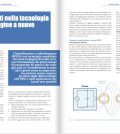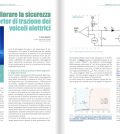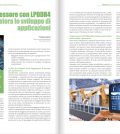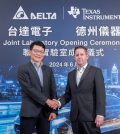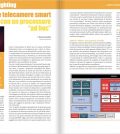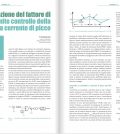Sw development tools – Answers provided by Andy Fritsch, the foundational tools director for software development organization, Texas Instruments
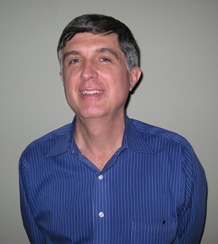
EONEWS: What are your opinions regarding the major trends for this market (slowing, growing, booming…)?
FRITSCH: The differentiation for most embedded systems is increasingly found in the software. Development teams are therefore concerned about maximizing software development productivity and protecting their software investment.
While creating the most advanced and highest performing systems, such as those found in mission-critical or infrastructure applications, will continue to require the most advanced code development and debug tools, there is also a strong and growing demand for ultra-low-cost tools to enable the creative energy of the university, hobbyist and maker communities, as well as smaller development teams with more limited development resources. No matter the size of the team, all developers today are concerned about time-to-market and robustness.
EONEWS: What are the key strategies adopted by your company in the short/medium period to address (or to better address) the needs of the market?
FRITSCH: Texas Instruments focuses on supporting open, widely adopted industry standards. Wherever possible, we try to promote and support development paradigms and their related standards that either already enjoy or are building widespread industry adoption. We create tools that work within those paradigms to enable our customers to easily and intuitively leverage the performance, power, and system integration advantages of our silicon.
An example of this is our focus on raising the level of abstraction used by software developers to express their programs. TI was the first to offer C-compilers for DSP and more recently we began supporting OpenCL Native Vector Types to enable code to be created in a more standardized and portable format while eliminating the need to use intrinsics. We offer a range of capabilities at various price/performance points to address all types of developers from students and hobbyists to advanced research and infrastructure developers.
EONEWS: What are you doing in order to implement your strategies (partnership/agreements, new acquisitions, investments in activities like R&D, people….)?
FRITSCH: We have been active in a variety of industry consortia and open source engagements, including Linaro, a consortium focused on open source development for ARM-based architectures, Eclipse, an open-source development environment, and several code development initatives including OpenMP, OpenCL, GCC, and LLVM.
We expect our activities with these groups and others to continue to expand as the demand for intuitive and efficient software development tools continues to grow. We also work with a variety of third party developers to offer support for particular types of applications with more specialized need.
EONEWS: What are the most important application?
FRITSCH: We provide support for a broad range of embedded processing applications from low-cost, controller-based solutions to more advanced multicore processor-based systems. We are seeing growth across our portfolio, particularly in industrial and automotive applications. Connected applications from end-point sensors and gateways to the cloud-based computing infrastructure are especially strong.
EONEWS: Which are the key factors that set your company apart from the competition?
FRITSCH: Since our earliest work in DSP and embedded processing in the 1980s, TI has continued to invest in tools that enable the creation of high performance systems from industry standard programming languages, such as C. TI created the first C compilers for DSP and assigned software development and processor architects to work together to create innovative solutions to enable our customers to take full advantage of the silicon‘s performance, power and system integration advantages.
Today our software development tool and silicon architects continue their close collaboration while leveraging industry standards to create an intuitive customer development experience for faster time-to-market. TI also provides a single toolset that supports all the devices in our embedded processing portfolio with our Code Composer Studio Integrated Development Environment. This environment includes a wide range of code development and debug capabilities for embedded microcontroller, homogeneous and heterogeneous multiprocessor systems.
EONEWS: And in the middle/long term (if you have a crystal ball!)?
FRITSCH: Development tool vendors will continue to offer more advanced capabilities at lower price points. Cloud-based tooling and other types of vitualized environments are also likely to become important, particularly for less complex projects, as are continued advances in high-level language abstraction and software debug visibility. TI is investing in each of these areas to continue providing an intuitive development experience that enables customers to more quickly leverage the advantages of TI silicon for faster time-to-market.
Edited by the Editorial Staff
Contenuti correlati
-
Il nuovo centro di distribuzione dei prodotti di TI
Texas Instruments (TI) ha aperto un nuovo centro per la distribuzione dei prodotti a Dreieich, nei pressi di Francoforte. Il nuovo impianto, che ha un’estensione di 9.000 metri quadrati, dispone di nuove funzionalità di automazione. Può infatti...
-
Progettazione di un circuito di precarica attiva con condensatore DC-Link ad alta tensione
Questo articolo presenta il processo di progettazione necessario per calcolare gli adeguati valori dei componenti che contribuiscono a ottenere il profilo di carica desiderato Leggi l’articolo completo su EO 521
-
I miglioramenti nella tecnologia RFID danno origine a nuove applicazioni
L’identificazione a radiofrequenza (RFID) è una tecnologia consolidata che viene impiegata da molti anni, con l’introduzione dei primi esempi di transponder RF passivi che risale agli anni 70. Probabilmente la usate tutti i giorni senza accorgervene, ma...
-
Come migliorare la sicurezza negli inverter di trazione dei veicoli elettrici
I progettisti di veicoli elettrici possono aumentare la sicurezza e l’affidabilità dei sistemi a inverter di trazione monitorando la soglia di tensione del gate Leggi l’articolo completo su EO520
-
Finanziamenti per 1,6 miliardi per Texas Instruments
Texas Instruments (TI) ha firmato un memorandum d’intesa preliminare non vincolante con il Dipartimento del Commercio degli Stati Uniti per un finanziamento diretto fino a 1,6 miliardi di dollari. Questa operazione rientra nell’ambito del CHIPS and Science...
-
Un processore con LPDDR4 integrata accelera lo sviluppo di applicazioni
Il System-in-Package rappresenta una valida scelta di progettazione e può essere determinante per lo sviluppo di svariate applicazioni e dispositivi di tipo general purpose, nonché per soluzioni compatte e ad alte prestazioni Leggi l’articolo completo su EO519
-
Progettazione di un’applicazione per supportare ampi intervalli di tensione di ingresso e della batteria
Oltre a contribuire a ridurre i tempi di progetto, l’utilizzo di un caricabatterie ad ampio VIN e ampia VOUT permette di valutare nuove tecnologie, come la ricarica bidirezionale a energia solare Leggi l’articolo completo su EO519
-
Texas Instruments e Delta Electronics insieme per le soluzioni per EV
Texas Instruments (TI) ha stretto una collaborazione a lungo termine con Delta Electronics per creare soluzioni di ricarica di bordo e alimentazione di nuova generazione per veicoli elettrici (EV). Questa collaborazione sfrutterà le capacità di ricerca e...
-
Realizzare telecamere smart basate sull’AI con un processore “ad hoc”
Il processore AM62A è progettato per applicazioni di visione da bassa a media che richiedono una o due telecamere. Grazie al suo innovativo acceleratore per AI, all’encoder/decoder H264/H265 e al processore ISP (Image Sensor Processor) integrato dotato...
-
La correzione del fattore di potenza tramite controllo della modalità a corrente di picco
Questo nuovo metodo di controllo in modalità a corrente di picco per PFC presenta numerosi vantaggi rispetto al tradizionale metodo di controllo in modalità a corrente media che verranno illustrati in questo articolo Leggi l’articolo completo su...





